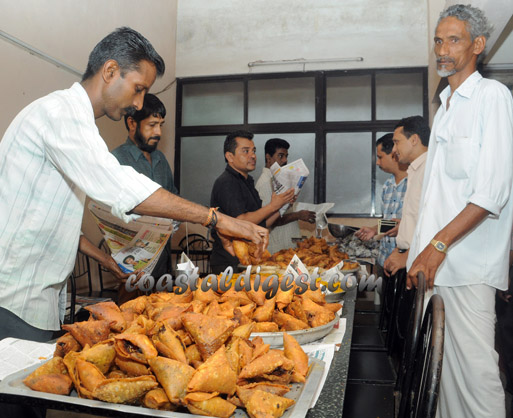
Come Ramadan and this triangular snack becomes a must-have in the everyday Iftar shopping list. Pretty much the way Samosas have become an inevitable part of Ramadan in Mangalore, Bunder’s Bombay Lucky Restaurant has, over the years become synonymous with the snack itself.
Riding on the name it has earned over a period of almost 100 years with its cuisines, Bombay Lucky Restaurant is not surprisingly one of the most preferred samosa destinations during the month of Ramadan.
Says M Sulaiman, the owner of Bombay Lucky Restaurant: “The way our samosas taste in Ramadan is way different from the way they do during other months. It has got to do with the preparation that goes on at a larger scale which enables us bring in a bit more variety in terms of the stuffing that goes into the snack. This kind of samosa preparation does not work out in other months financially too as the scale of production won’t be as big as it is during Ramadan”.
Hundreds of samosas are produced at the hotel on a daily basis. Hotel staff sit down to do the preparing in two sessions a day. Besides maida, onions, carrots and other masalas, mutton kheema serves as the primary ingredient for the snack’s stuffing. As part of Ramadan snacks, the hotel even manufactures chicken puffs and mutton cutlets, although in lesser quantities.
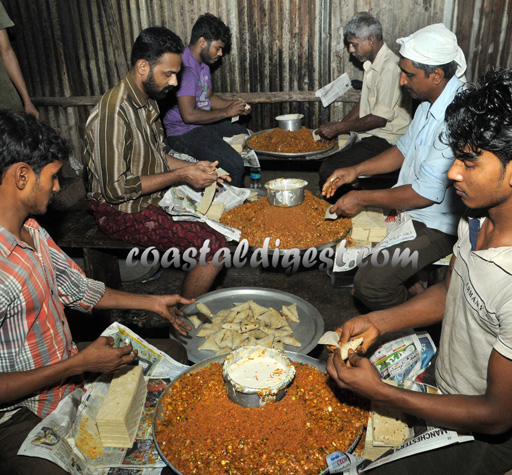
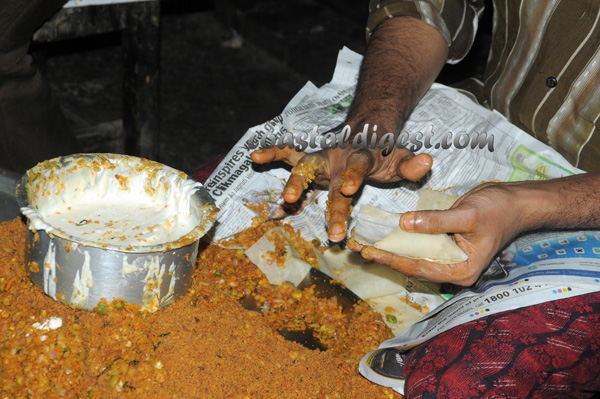
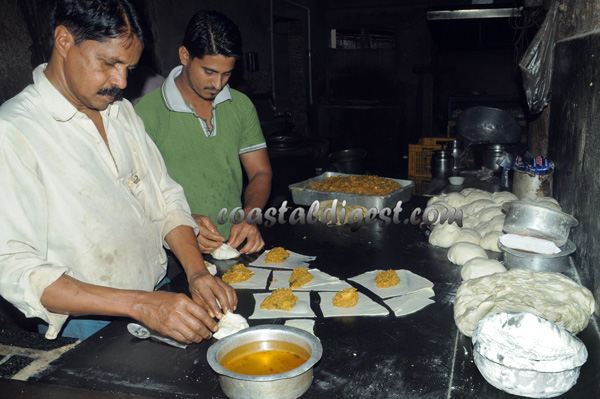

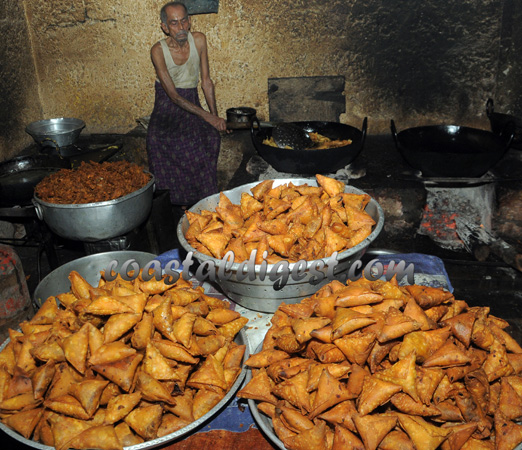
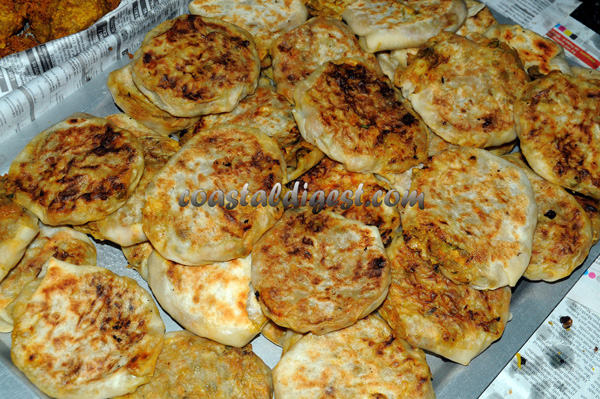
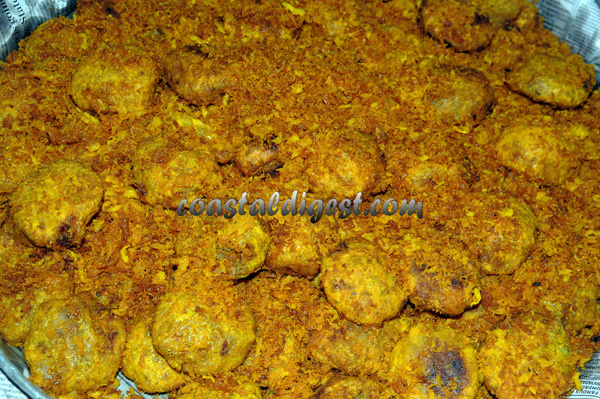
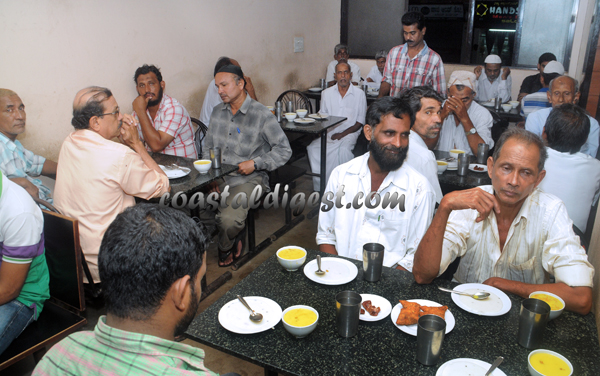
The samosas prepared at the hotel cater to the Iftar needs of several households, get togethers and mosques in Mangalore. Eidgah mosque at Bawtagudda, Ahsanul Masjid at Bikarnakatte, and several other mosques in the city place regular orders for their daily Iftars with the restaurant. Iftar arrangement is also made at the hotel itself where scores of Muslims break their fast.
The restaurant has always been known for its late night services. It is the one of the very few hotels in the city where hot and fresh food is served even as late as 12 in the night. Uniquely tasting mutton and chicken biryanis, pulaos, ghee rice, Kerala parotas and other mutton and chicken dishes have made Bombay Lucky Restaurant just that special over a period of time.
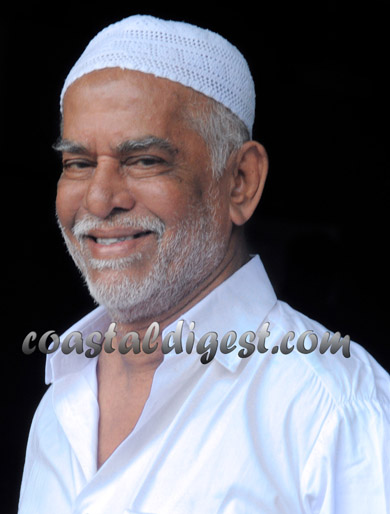 The restaurant runs under the experienced eyes of Mr. Sulaiman, who knows more than a thing or two about running hotels. “From being a cleaner washing hotel utensils, a waiter serving tea to stalls and to hotel customers, a cashier to finally being an owner, I have seen it all in my 56 years of hoteling experience. It all started at Jamia Restaurant here in Bunder where I got my initial training. In 1972 I started Hotel Olympia in partnership with another person. Later down the years, hotel Midland, Light of Persia, and Hotel Majestic came about. Bombay Lucky Restaurant was there even before I was around. From the last 15-20 years, I have been associated with this restaurant and today I own the restaurant”, says Mr. Sulaiman, disclosing that after his taking reigns, the food quality and service at the hotel was taken to another level altogether.
The restaurant runs under the experienced eyes of Mr. Sulaiman, who knows more than a thing or two about running hotels. “From being a cleaner washing hotel utensils, a waiter serving tea to stalls and to hotel customers, a cashier to finally being an owner, I have seen it all in my 56 years of hoteling experience. It all started at Jamia Restaurant here in Bunder where I got my initial training. In 1972 I started Hotel Olympia in partnership with another person. Later down the years, hotel Midland, Light of Persia, and Hotel Majestic came about. Bombay Lucky Restaurant was there even before I was around. From the last 15-20 years, I have been associated with this restaurant and today I own the restaurant”, says Mr. Sulaiman, disclosing that after his taking reigns, the food quality and service at the hotel was taken to another level altogether.
The restaurant is on its way to widening its sphere both in terms of size and quality. The hotel will find itself housed in a newer, bigger building at the very same spot with better facilities such as A/C and non A/C sections, availability of banquet halls and terrace halls for public gatherings and parties, better privacy for dining families among a few. In terms of variety in food too, the hotel will provide its customers with more to choose from by introducing tandoori dishes, tikkas, shawarmas and many more options. A lodge will also feature in the restaurant building. The new-look hotel is slated for inauguration in a month or two.
A heavy duty hotel that Bombay Lucky Restaurant is, Mr. Sulaiman is ably supported by his sons Iqbal, Yasin and Mushtaq and nephew Zameer. Sattar Saab is also an integral part of the hotel’s management. Mr. Iqbal and others work in shifts to oversee that the smooth running of hotel services from dawn to midnight.
With its distinct food quality and service, Bombay Hotel has got more than just ‘lucky’.
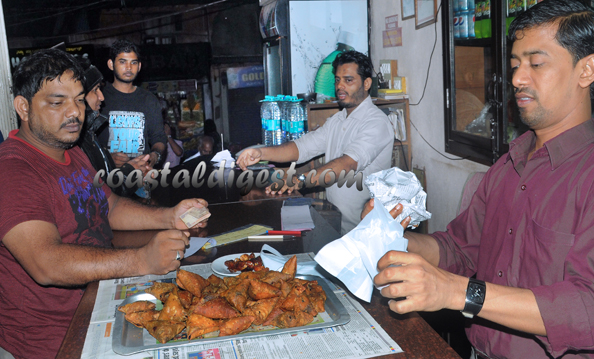
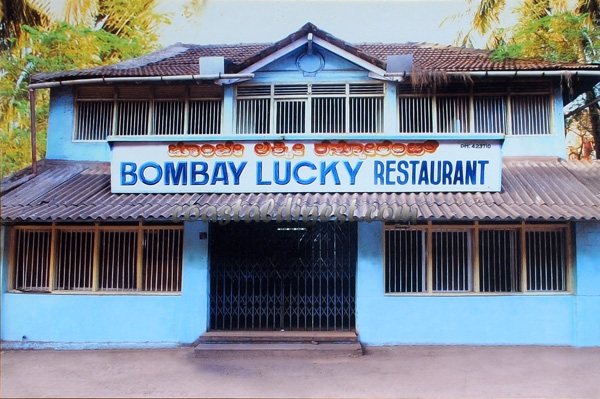






Comments
Add new comment